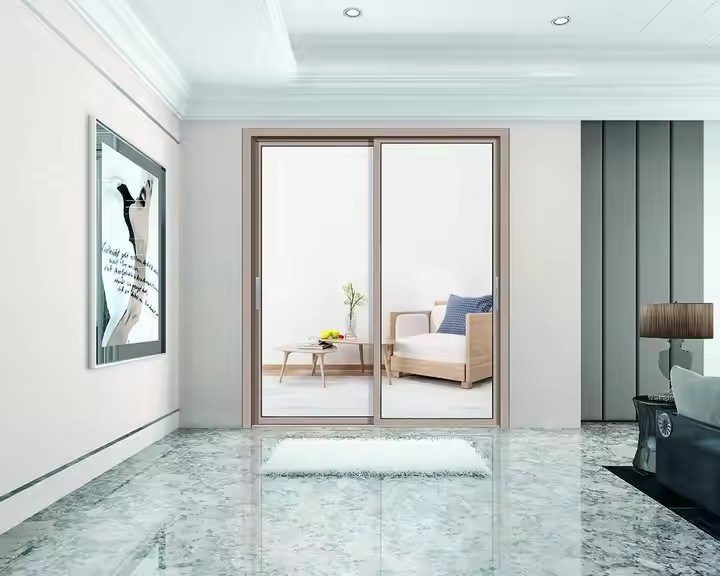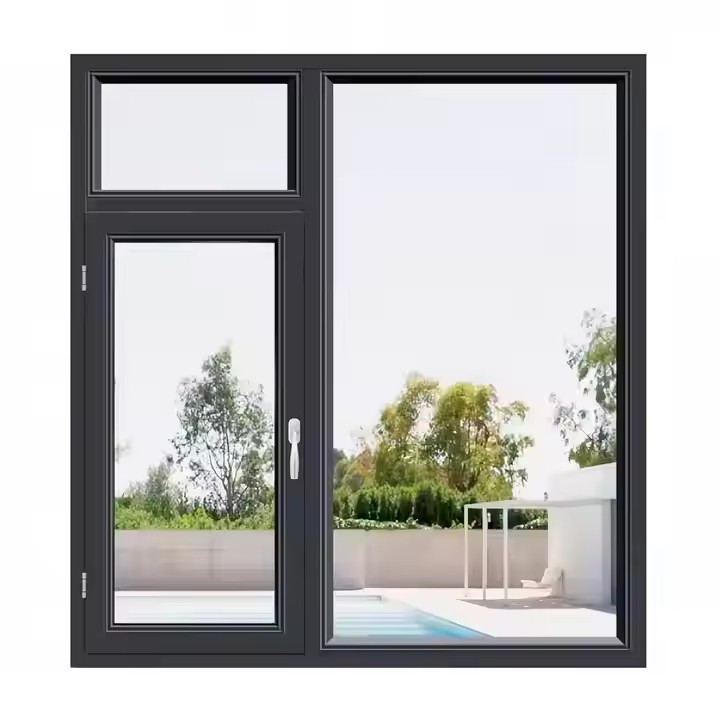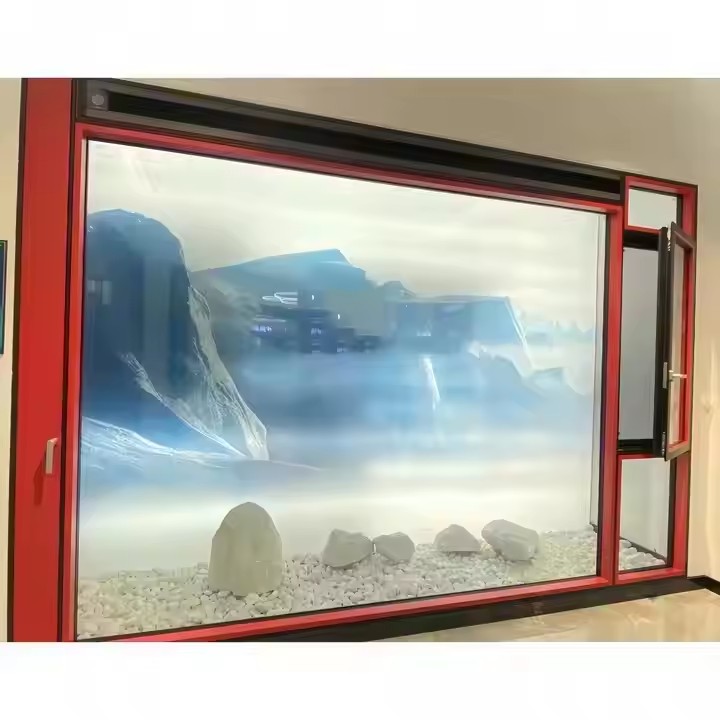There are many sales channels for aluminum alloy doors and windows, such as online and offline sales. But which methods can effectively expand both the scope and reach of these sales? Well-known online platforms—such as Facebook, Instagram, and others—can be utilized for promotion. These platforms allow for influencer marketing, celebrity endorsements, and online advertising to boost brand visibility and attract international buyers.
I. Material Characteristics: The Balance Between Lightweight and High Strength
The core advantage of Chinese aluminum alloy doors and windows lies in advanced material science. Aluminum alloy profiles use aluminum as the base, enhanced with magnesium, silicon, copper, and other elements. Through aging treatment, these materials form strengthening phases, achieving tensile strengths of 160–260 MPa while maintaining only one-third the density of steel. This “lightweight yet strong” feature drives innovation in door and window design.
Localized Alloy Composition:
Chinese companies develop customized profiles for different climate zones. For instance, in southern China, profiles with higher copper content are used for better corrosion resistance, while in colder northern regions, magnesium is added to enhance low-temperature toughness, ensuring material ductility at –30°C.
Surface Treatment Innovations:
From traditional anodizing to powder coating and fluorocarbon finishes, Chinese manufacturers now offer a complete range of surface treatments. Leading brands like Guangdong Fenglu and Jianmei provide fluorocarbon-coated profiles that show no signs of chalking or fading even after five years of exposure in extreme climates like Hainan and Xinjiang.

II. Structural Design: Fusion of Functionality and Aesthetics
China’s aluminum alloy doors and windows have evolved from the traditional “frame and sash separation” model into a modular, systematized design structure.
Multi-chamber Profiles:
Mainstream profiles now feature 3–5 chambers (separating interior and exterior zones with thermal breaks), with heat transfer coefficients (K-value) as low as 1.8–2.5 W/(㎡·K), surpassing the national standard of K ≤ 3.0. For passive houses, 9-chamber profiles can achieve K-values as low as 0.8 W/(㎡·K) and air tightness rating of Grade 8.
Localized Hardware Development:
Domestic companies have moved from copying European hinges and locks to independently developing systems like “hidden hinges + multi-point locking mechanisms.” Brands such as HOPO and Kin Long now produce hardware that withstands over 100,000 open-close cycles without failure and pass 500-hour salt spray tests.
Breakthroughs in Custom Shapes:
Projects like Shenzhen Ping An Financial Center have applied “cold bending technology” to create curved profiles with radii ≤1.5m, while maintaining wall thickness ≥1.4mm (national standard ≥1.2mm), solving the issues of heavy and energy-inefficient traditional steel window structures.
III. Energy Efficiency and Safety: Technology-Driven Industry Standards

China’s technological advancements in energy conservation and safety are driven by both regulation and market demands.
Mandatory Energy Standards:
The implementation of the GB 55015-2021 standard reduced allowable K-values from 3.0 to 2.5 W/(㎡·K). Companies achieve this with composite solutions:
Thermal Breaks: PA66-GF25 insulation strips (thermal conductivity ≤0.3 W/(m·K))
Glazing: Triple glazing with Low-E coatings (5mm+12A+5mm+12A+5mm), achieving K-values of 1.4 W/(㎡·K)
Sealing: Multi-layer EPDM seals (Shore hardness 60±5A) and concealed drainage, achieving water tightness Grade 6 and water penetration ≤10L/(㎡·h)
Comprehensive Safety Features:
Wind Resistance: Profiles with wall thickness ≥2.0mm can withstand 9-level wind pressure, equivalent to typhoons over 55 m/s.
Anti-theft Design: Standardized anti-pry lock points (≤300mm spacing), safety cords (≥80kg load capacity), fingerprint scanners, and smart alarms in high-end products.
Fire Resistance: Aluminum alloy 6060-T6 (melting point 650°C) combined with fire-expanding seals ensures one-hour fire integrity, meeting Class B fire door requirements.
IV. Market Applications: From Standardization to Customization
China’s aluminum alloy door and window market combines mass production with personalized customization, supported by the world’s most mature supply chain.
Advanced Industrial Production:
Automation: Leading companies like Asia Aluminum and Xingfa use German HOMAG CNC machinery with ±0.1mm cutting precision and assembly error ≤0.5mm.
Modular Standardization: Modular libraries of profiles, hardware, and glass enable 72-hour delivery—40% faster than European timelines.
Tailored to Various Scenarios:
Residential: Quick-install systems for old neighborhoods allow full window replacement without damaging walls, improving sound insulation by 30dB (up to 35dB).
Commercial: Projects like Shanghai Tower use unitized curtain wall and window integration, with single units weighing up to 1.2 tons. BIM tech ensures millimeter-level installation accuracy.
Special Use Cases: Passive buildings in Xiong’an use high airtight windows and smart ventilation, maintaining indoor PM2.5 levels below 15μg/m³ and 0.3 air changes/hour (vs. national standard of 1.0).
Green Manufacturing Initiatives:
China’s industry now integrates “recycled aluminum + solar power.” Recycled aluminum usage reaches 70% (saving 3.4 tons of standard coal per ton), and companies like CHALCO use solar power for up to 30% of production energy, cutting carbon emissions by 15% below EU benchmarks.
V. Technical Bottlenecks and Future Trends: From “Manufacturing” to “Smart Manufacturing”
Although China’s technology leads globally, challenges remain:
Dependence on Imported High-End Hardware: Heavy-duty hinges and smart systems for super high-rise buildings still rely on brands like Germany’s G-U and Italy’s Giesse, with domestic substitution rates under 30%.

Low Smart Integration Rates: Window-smart home integration (e.g., temperature sensors, rain-activated closures) has only 12% adoption, far below Europe’s 45%.
Incomplete Standardization: Definitions for “system windows” are still inconsistent across Chinese standards, causing product quality variation in the market.
Future Development Will Focus on Three Key Directions:
Functional Materials: Use of graphene-enhanced aluminum for 20% lower thermal conductivity; nano self-cleaning coatings with contact angles ≥150°
Digital Manufacturing: 5G and Industrial IoT to realize “digital twins” of windows for full-process virtual simulation from design to installation
Scenario-Based Applications: Integration with building-integrated photovoltaics (BIPV), using cadmium telluride thin-film solar cells in glass with efficiency above 18%.

